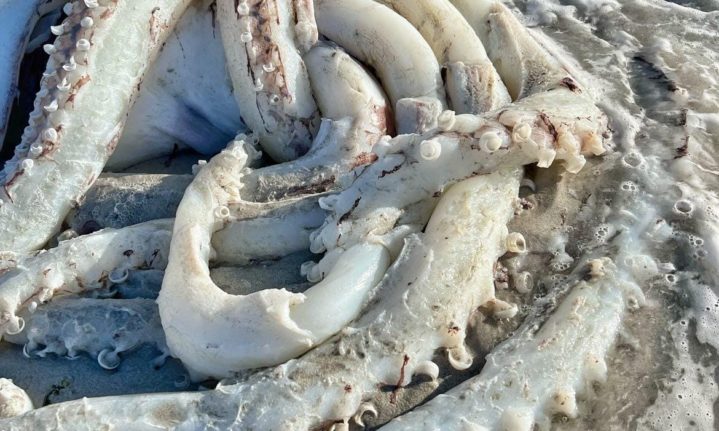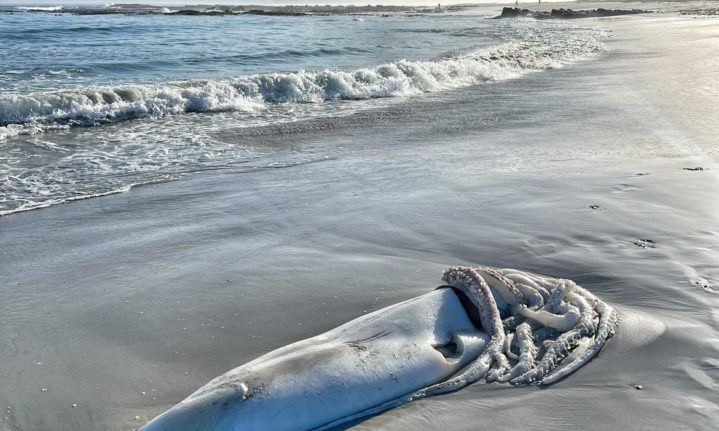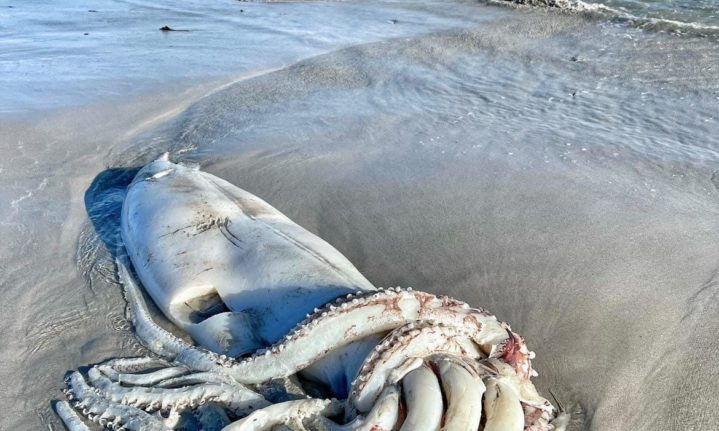A giant squid that washed up on Kommetjie Beach just outside Cape Town went viral over the long weekend, but little is known about this peculiar cephalopod that roams the ocean.

Ali Paulus came across this beached animal with her family on the morning of 30 April and said that the squid might have been slashed by a boat propeller due to the wound above its tentacles. It was removed from the beach by the afternoon and it was taken to Iziko Natural History Museum, where it will be studied further.
‘They are not seen often and right now taxonomists can’t even agree on how many species there are,’ said Tinus Beukes, Curator at the Two Oceans Aquarium in an interview on Cape Talk. ‘For the one that washed up in Kommetjie… it’s either a single species or it can be up to 17 different species. So, the geneticists are busy looking at that.’
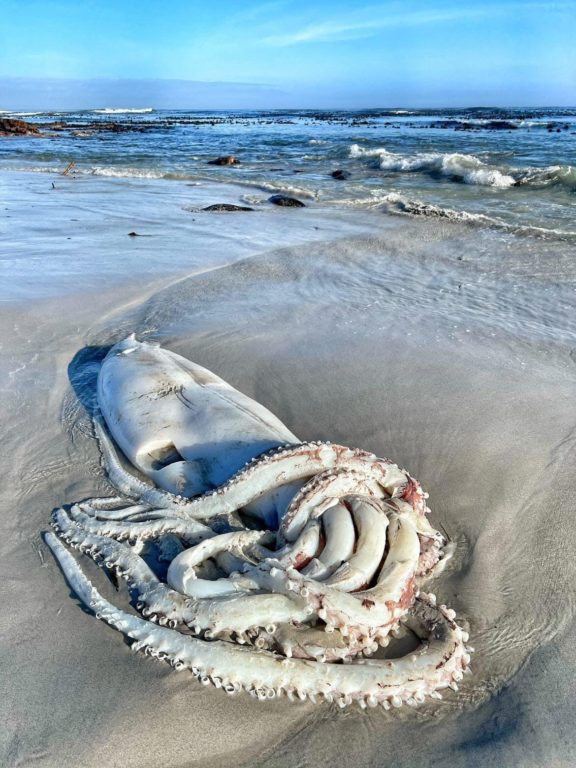
Beukes said that not much is known about these sea creatures, which are incredibly difficult to study. The first living one was only photographed in 2004. ‘We don’t see them that often. Over the last 10 years, I know of about four that washed up on the West Coast.’
In South Africa, 19 giant squids are stored at the natural history collection of Iziko Museums.
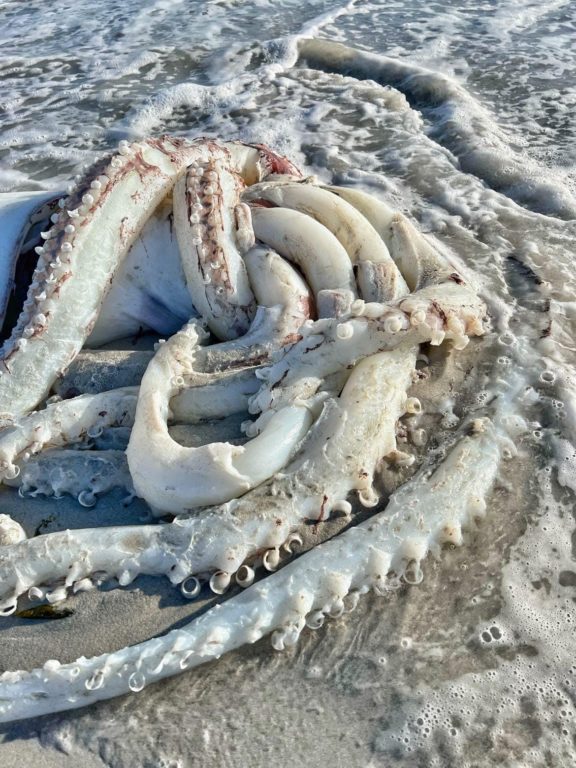
Interesting facts about the giant squid
A giant squid (Architeuthis) is part of the cephalopod family, which includes octopus and cuttlefish. The giant squid however, is one of the largest invertebrates on earth, with some reaching a length of 13 m. The reason for their large size is due to a phenomenon called abyssal gigantism. They only live up to six years.
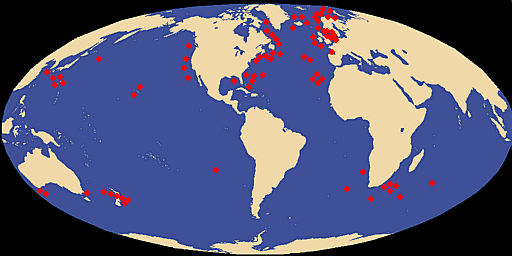
Giant squid global distribution. Picture: Wikimedia Commons/ Wikimedia Commons/ NASA
The cause of gigantism is presumed to be because of food scarcity, with large animals tending to have more efficient metabolisms and being able to travel further on their reserves. But, their size is the least interesting aspect of these animals.
These alien-like creatures have eight arms and two feeding tentacles they can shoot out up to 10 m away, which are tipped with sharp-toothed suckers that can leave scars around the mouths of sperm whales, their main predators.
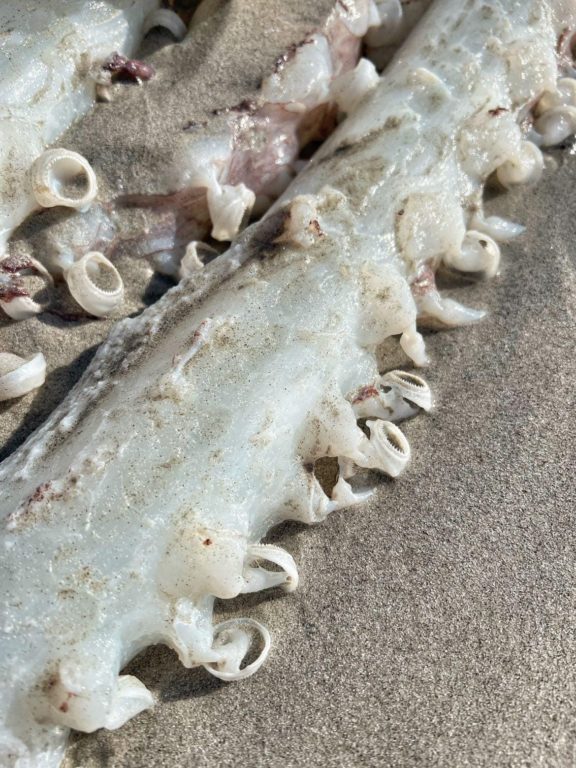
These tentacles can be double the squid’s body length, and they can also shoot it out like a net to catch prey. Although scientists are yet to witness a giant squid feed, autopsies have revealed that they predominantly feed on deep-water fish.
The giant squid is said to have the biggest eyes in the animal kingdom, up to 30 cm in diameter. This allows them to see bioluminescent prey in the dark.
According to SPCA spokesperson, Jon Friedman, there wasn’t much left of the carcass when he arrived on the beach in Kommetjie, with the sought after bits such as the eyes, beak and tentacles carved off. Interestingly, the beak forms an important part of what is called ambergris – a prized slurry of squid beaks and whale faeces.
Ambergris is an important ingredient in perfumes, such as Chanel no 5. It is formed after a giant squid is eaten by a sperm whale, and it cannot digest the beak. The beak is discarded in the faces, where it floats on the whim of the currents before being picked up by someone who knows its value. In fact, a Thai fisherman once picked up a 100 kg stool which fetched 3 million US dollars.
After mating, females release hundreds of thousands of transparent eggs into the water in a jellied clump. Most are snatched up by other marine animals, but the few that survive end up as giant predators.
Watch this video for more:
Pictures: Ali Paulus
ALSO READ










